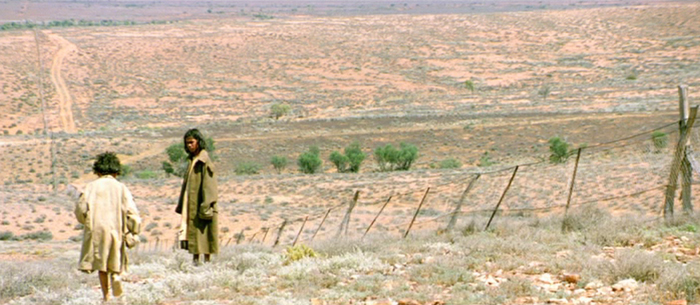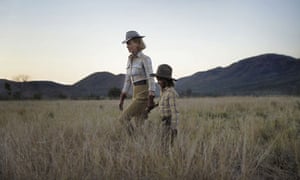Any attention is good attention
When it comes to the Australian content industry is any attention good attention?
Australian films have a longstanding history of featuring the Australian landscape, something that generally makes a film notably Australian and typically portrays a notion of ‘Australian identity’. The landscape of Australia is something unique to our country, something that tends to play into many of our films, and is a drawcard for tourism.
This obsession with landscape is often integral to the story, the landscape as Beeton outlines “is an active character to be conquered, understood or even accepted as beyond our control” (Beeton, 2010, pg.114), this is a common trope among many Australian films. Films that are historically based often require the landscape to tell the story, like Rabbit Proof Fence (2002) and Australia (2008), as George explains when speaking of Baz Lurhmann’s Australia; “landscape will amplify the drama and emotion of the story” (George, 2006), the landscape is essential to the story. The landscape or setting not only exists as a backdrop to the story, but also as a character to the narrative, allowing the viewer to form an emotional attachment to the story as a whole (Beeton, 2010, pg.114).


Films like Mad Max 2 (1981) and Pricilla Queen of the Desert (1994) begin to show the hostile nature of the landscape, as something that dominates life and is all consuming. These films show the struggle of being in a foreign landscape and trying to coexist with the landscape. As with many Australian films there is an emphasis on the natural landscape, in particular the outback, as Thomas puts it “at best we can subsist with the landscape as individuals, but not as a culture. Being Australian…means to survive the landscape, to adapt oneself to it rather than dominating it (Thomas, 1996), these films both embody this notion.


Australian film and tourism have long been interrelated, with tourism companies and big corporations such as Tourism Australia and Screen Australia often providing incentives for productions to be made in Australia or feature Australian content (often in the form of landscape and setting). Tourists often attempt to connect their emotional responses to a film with the place it was set (Beeton, 2010, pg.114), in many cases this leads to further revenue and income opportunities for the area at hand. More recently we have seen big Aussie film stars associate with tourism ventures, such as Chris Hemsworth and Tourism Australia. As an actor Hemsworth already brings attention to Australia, and putting his face (or in this case his voice) to a tourism campaign only reinforces this.
The horror film genre is another way attention is being brought to the Australian landscape. Genre films have long used this technique, though more recently films such as Wolf Creek (2005 and 2013) have followed suit. Here the Australian landscape is again portrayed as a hostile environment taking what Beeton calls “an active role, at times even becoming the primary character or “star”” (Beeton, 2010, pg.114). These types of films are only growing in popularity.

Despite a continual emphasis on the rugged hostile nature of the Australian landscape, its featuring in Australian films only furthers the attention and tourist interest to Australia. Cleary not any attention is good attention, though in this case attention from international markets and tourists is aiding in our box office numbers and our general tourism industry, which we as a country heavily rely on. More can be done however to change the types of landscapes represented in Australian film. In Australia it often comes back to our relationship with what Wood calls “the vast unknown of the outback” (Wood, 2017) it seems that many film makers and corporations deem it necessary to include typical Australian landscapes (think ‘outback’) to be considered or viewed as Australian. This should not be the case and more emphasis should be placed on representing more diverse Australian stories, and in turn more diverse landscapes.
Beeton, Sue. Landscapes as Characters: Film, Tourism and a Sense of Place [online]. Metro Magazine: Media & Education Magazine, No. 166, 2010: 114-118. Availability: <https://search-informit-com-au.ezproxy.uow.edu.au/documentSummary;dn=410690301116007;res=IELLCC> ISSN: 0312-2654.
George, S. (2006). Baz sees the big picture in Australian landscape. [online] Theaustralian.com.au. Available at: https://www.theaustralian.com.au/arts/baz-sees-the-big-picture-in-australian-landscape/news-story/b42a4f2dd415cf592739af78067e659d?sv=5a28a990eb8d830882af6e50dae13128.
Wood, P. (2017). Why the outback is the go-to setting for Australian horror films. [online] ABC News. Available at: http://www.abc.net.au/news/2017-08-25/why-the-outback-is-the-go-to-setting-for-australian-horrors/8841220.
